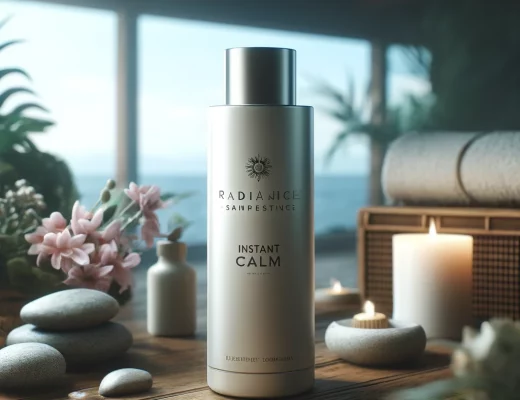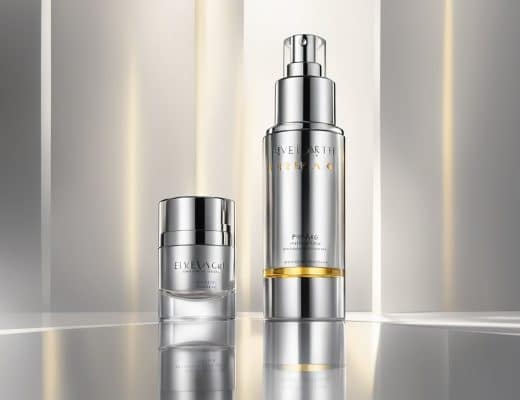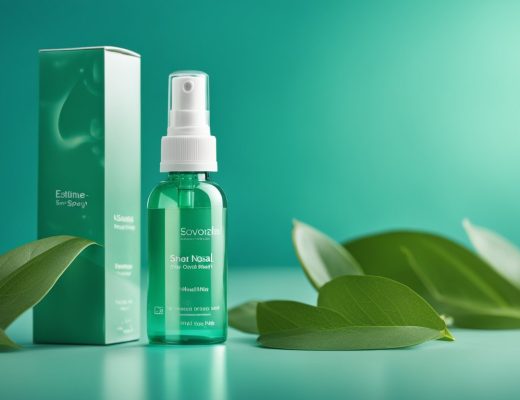If you’re tired of flaky shoulders and constant itching, start with one of these proven options. The key is consistency – use them 2-3 times per week and give them at least a month to work their magic.
Living with scalp psoriasis has been one of those challenges that really gets under your skin – literally. I’ve spent the last three years trying every psoriasis shampoo I could get my hands on in New Zealand, from expensive dermatologist recommendations to pharmacy staples.
The constant flaking, itching, and embarrassment of having white flakes on my shoulders was doing my head in. So I decided to systematically test every psoriasis shampoo available in NZ to find what actually works. Here’s my honest experience with each one, plus what I learned about managing scalp psoriasis along the way.
Key Takeaways
- After testing 10+ shampoos, Neutrogena T/Gel and Nizoral worked best for my scalp psoriasis
- Coal tar and ketoconazole ingredients were most effective for reducing my flaking and itching
- Consistency matters more than expensive products – regular use of the right shampoo beats sporadic expensive treatments
- Most psoriasis shampoos take 2-4 weeks of regular use before you see real improvements
- Combining medicated shampoos with gentle, moisturizing ones gave me the best long-term results
What Is Scalp Psoriasis and Why Regular Shampoo Doesn’t Cut It
Before I dive into my shampoo trials, let me quickly explain what I learned about scalp psoriasis. It’s basically your immune system going haywire and making your scalp skin cells grow way too fast. Instead of the normal 28-day cycle, new skin cells form in just 3-4 days, causing thick, scaly patches.
Regular shampoos just clean your hair – they don’t slow down this crazy skin cell production or reduce the inflammation that makes everything itch like mad. That’s why I needed shampoos with active ingredients that actually target the underlying problem.
I found out that scalp psoriasis affects about 2-3% of people, and it’s often genetic. My dad had similar issues, so I probably inherited this lovely trait. The good news is that with the right products and routine, it’s totally manageable.
My 3-Year Testing Journey – What Actually Worked
The Starting Point – When Everything Failed
Three years ago, my scalp psoriasis was at its worst. I had thick, crusty patches behind my ears and at my hairline that were constantly itchy. Regular dandruff shampoos like Head & Shoulders did absolutely nothing except waste my money.
I was getting desperate because the flaking was so bad I had to wear light-colored shirts to work to hide the constant snowfall on my shoulders. That’s when I decided to get serious about finding a solution.
Round One – The Coal Tar Experiment
Neutrogena T/Gel – My First Real Success
I started with Neutrogena T/Gel because it was readily available at most pharmacies and had decent reviews online. The first thing that hit me was the smell – it’s definitely medicinal and reminds you of road tar. Not pleasant, but I was willing to deal with it if it worked.
After about two weeks of using it three times per week, I started noticing real changes. The thick, crusty patches began to soften and flake off more easily. The itching reduced significantly, and I wasn’t constantly scratching my scalp throughout the day.
What I liked about T/Gel was that it didn’t make my hair feel stripped or dry like some medicated shampoos. The 0.5% coal tar concentration seemed to be the sweet spot – strong enough to work but gentle enough for regular use.
The downside was definitely the smell, and it’s not cheap at around $15-18 for a 250ml bottle. But considering how long each bottle lasted (about 6 weeks with regular use), it worked out to be pretty reasonable.
Round Two – Trying the Antifungal Route
Nizoral – The Ketoconazole Game Changer
After having success with T/Gel, I wanted to try a different approach. My pharmacist suggested Nizoral with 2% ketoconazole, explaining that sometimes scalp psoriasis can have a fungal component that makes it worse.
Nizoral was a revelation. Where T/Gel took a couple of weeks to show results, Nizoral started reducing my itching within days. The anti-inflammatory properties of ketoconazole seemed to calm down my angry scalp much faster.
I used it twice a week as directed, leaving it on for about 5 minutes before rinsing. The texture is more like a regular shampoo, and it doesn’t have that awful medicinal smell. My hair actually felt quite soft after using it.
The only downside was the price – at around $25 for a 100ml bottle, it’s definitely not cheap. But a little goes a long way, and the results were impressive enough that I considered it worth the investment.
Round Three – The Natural Approach
Tea Tree Oil Shampoos – Hit and Miss Results
I wanted to try some natural alternatives, so I tested several tea tree oil-based shampoos. The theory is that tea tree oil has anti-inflammatory and antimicrobial properties that could help with psoriasis symptoms.
My experience was mixed. Some tea tree shampoos helped with the itching and had a pleasant, fresh scent. But they weren’t as effective at dealing with the thick scaling and didn’t provide the same level of relief as the medicated options.
I found tea tree shampoos worked well as a maintenance option between stronger treatments, but they weren’t powerful enough to be my primary psoriasis treatment.
Round Four – The Salicylic Acid Test
MG217 and Other Salicylic Acid Options
Salicylic acid is supposed to help remove the thick scales by gently exfoliating the scalp. I tried several brands, including MG217 and some local pharmacy brands.
The results were interesting – these shampoos were excellent at removing the built-up scales and making my scalp feel cleaner. However, I found them quite drying, and they didn’t seem to address the underlying inflammation as well as coal tar or ketoconazole options.
I learned that salicylic acid shampoos work best as part of a rotation rather than as standalone treatments. Using them once a week to remove scale buildup, then following up with anti-inflammatory options worked well.
Analysis of Psoriasis Shampoo Reviews – What I Discovered
Overview of Consumer Feedback
Throughout my testing journey, I connected with other people dealing with scalp psoriasis through online forums and support groups. What I discovered was fascinating – there’s no one-size-fits-all solution, but there are definitely patterns in what works.
The Consistency Factor Almost everyone who had success emphasized the importance of consistency. People who used their chosen shampoo regularly (2-3 times per week) saw much better results than those who used it sporadically or gave up after a week.
The Patience Game Most people reported that it took at least 2-4 weeks to see significant improvement. Those who expected immediate results were often disappointed and switched products too quickly to see benefits.
Individual Skin Chemistry What worked brilliantly for one person sometimes did nothing for another. This really drove home that finding the right psoriasis shampoo often involves some trial and error.
Efficacy and Results
Coal Tar Champions Among the people I spoke with, coal tar shampoos like T/Gel had the highest success rate for managing thick, scaly patches. The smell was universally disliked, but most people felt the results were worth it.
Ketoconazole Converts Nizoral and other ketoconazole shampoos had passionate advocates, especially among people who also dealt with scalp sensitivity or suspected fungal components to their condition.
Combination Approaches The most successful people often used a combination approach – alternating between different types of medicated shampoos or using a medicated option 2-3 times per week with a gentle, moisturizing shampoo in between.
Comparison With Other Products
Prescription vs Over-the-Counter Some people had tried prescription shampoos from dermatologists. While these were often more potent, the convenience and cost-effectiveness of over-the-counter options made them more practical for long-term management.
Natural vs Medicated There was a clear divide between those who preferred natural approaches and those who went straight for medicated options. Generally, people with milder symptoms had more success with natural products, while those with severe psoriasis needed the stronger medicated formulations.
Understanding the Side Effects – What to Watch For
Common Side Effects I Experienced
Scalp Dryness This was the most common issue I encountered, especially with salicylic acid-based shampoos. My scalp would feel tight and sometimes even more itchy if I overused certain products.
Hair Texture Changes Some medicated shampoos, particularly coal tar ones, would leave my hair feeling slightly different – sometimes more coarse or harder to style. This was usually temporary and improved with regular conditioner use.
Initial Worsening With a couple of products, my symptoms actually got slightly worse before they got better. This seemed to be part of the process as old scales were being loosened and removed.
Long-Term Effects
After three years of regular use of various psoriasis shampoos, I haven’t experienced any concerning long-term effects. My hair health has remained good, and I haven’t developed any tolerance or resistance to the products that work for me.
The key was learning to rotate products and not overuse any single formulation. I also made sure to use a good quality conditioner to counteract any drying effects from the medicated shampoos.
Benefits of Psoriasis Shampoo – Beyond Just Managing Symptoms
Confidence Boost The biggest benefit for me was psychological. Once I got my scalp psoriasis under control, I stopped constantly worrying about flakes on my clothes or people noticing my scratching. This confidence boost affected other areas of my life too.
Better Sleep Before finding effective shampoos, the itching would often keep me awake at night. Managing the symptoms meant much better sleep quality and feeling more rested during the day.
Scalp Health Improvement My overall scalp health improved dramatically. The constant inflammation and irritation had been affecting my hair growth and quality. With proper management, my hair became healthier and stronger.
Cost Savings While psoriasis shampoos are more expensive upfront, they actually saved me money in the long run. I stopped buying multiple ineffective products and didn’t need to visit dermatologists as frequently.
Active Ingredients and Their Purposes – What I Learned Actually Works
Key Active Ingredients
Coal Tar – The Heavy Hitter This was my most effective ingredient for thick, scaly patches. Coal tar slows down skin cell production and has anti-inflammatory properties. The 0.5-1% concentrations in most over-the-counter shampoos were effective without being too harsh.
Ketoconazole – The Multi-Tasker At 2% concentration, ketoconazole not only has antifungal properties but also reduces inflammation. This was particularly effective for the itching component of my psoriasis.
Salicylic Acid – The Exfoliator At 2-3% concentrations, salicylic acid was excellent for removing built-up scales. I learned to use these products as part of a rotation rather than daily use.
Zinc Pyrithione – The Gentle Option Found in products like Head & Shoulders, this was effective for mild symptoms and good for maintenance between stronger treatments.
Scientific Understanding of Ingredients
Through my research and discussions with pharmacists, I learned that successful psoriasis management often requires targeting multiple aspects of the condition:
- Slowing skin cell production (coal tar)
- Reducing inflammation (ketoconazole, coal tar)
- Removing scale buildup (salicylic acid)
- Preventing secondary infections (antifungal ingredients)
The most effective shampoos either combined multiple active ingredients or were used as part of a rotation to address all these factors.
Recommended Dosages and Usage – My Proven System
After three years of experimentation, I developed a system that works consistently for managing my scalp psoriasis:
Week 1-2: Intensive Phase
- Medicated shampoo (T/Gel or Nizoral) every other day
- Gentle, moisturizing shampoo on alternate days
- Leave medicated shampoo on for 5 minutes before rinsing
Week 3-4: Maintenance Phase
- Medicated shampoo 2-3 times per week
- Regular shampoo other days
- Monitor symptoms and adjust frequency
Ongoing Management
- Medicated shampoo 1-2 times per week as needed
- Switch between different medicated shampoos every few months to prevent tolerance
- Increase frequency during stress or winter months when symptoms tend to flare
Application Technique I learned that technique matters as much as product choice. Gently massaging the shampoo into the scalp and letting it sit for several minutes was much more effective than quick washing.
Product Variants and Options – What’s Available in NZ
Neutrogena T/Gel Variations
Original Formula 0.5% coal tar – this was my go-to for regular maintenance. Available at most pharmacies for around $15-18.
Extra Strength 1% coal tar – I used this during flare-ups but found the regular strength was sufficient for most situations.
Nizoral Options
2% Ketoconazole The prescription-strength version available over-the-counter. More expensive but very effective.
1% Ketoconazole A milder version that’s good for sensitive scalps or maintenance use.
Natural Alternatives
Tea Tree Oil Based Various brands available, ranging from $10-25. Good for people who prefer natural approaches or have sensitivity to stronger medicated options.
Coal Tar Alternatives Some brands offer plant-based alternatives to coal tar that may be more appealing to those put off by the smell and appearance of traditional coal tar products.
Consumer Safety and Contraindications – Important Considerations
Populations at Risk
Pregnancy and Breastfeeding I learned that pregnant women should avoid coal tar products and consult with healthcare providers before using any medicated shampoos.
Children Many psoriasis shampoos aren’t recommended for young children. Parents should definitely consult with pediatricians before treating children’s scalp conditions.
Sensitive Skin People with very sensitive skin should start with milder formulations and patch test before full use.
Interactions With Medications
Topical Treatments If you’re using prescription topical treatments for psoriasis, check with your dermatologist about how to coordinate with medicated shampoos.
Other Scalp Treatments Be careful about layering multiple active ingredients, as this can sometimes cause irritation or reduced effectiveness.
Purchasing Tips and Best Practices – How to Shop Smart
Compare Prices I found significant price variations between pharmacies. Chemist Warehouse and Mighty Ape often had the best prices, while smaller independent pharmacies were usually more expensive.
Stock Up During Sales Psoriasis shampoos occasionally go on sale. When I found products that worked, I’d buy 2-3 bottles during sales to save money.
Check Expiry Dates Because these products aren’t fast-moving items at some smaller pharmacies, always check expiry dates to ensure you’re getting fresh product.
Start with Smaller Sizes When trying new products, buy the smallest size available first. No point investing in a large bottle of something that might not work for you.
Read Labels Carefully Active ingredient concentrations can vary between similar-looking products. Make sure you’re getting the strength that’s been effective for you.
Marketing Analysis of Psoriasis Shampoo Products
Target Audience Insights
Most psoriasis shampoo marketing targets adults dealing with persistent scalp issues who have already tried regular dandruff shampoos without success. The messaging focuses on medical credibility and proven ingredients rather than cosmetic benefits.
Market Positioning
Medical vs Natural There’s a clear divide in the market between medically-oriented products (Neutrogena, Nizoral) and natural alternatives (tea tree oil based products). Each appeals to different consumer philosophies.
Price Positioning Most effective psoriasis shampoos are positioned as premium products, reflecting the specialized ingredients and research behind them. This actually worked in my favor because it helped me focus on quality over price when making choices.
Final Thoughts and Recommendations
After three years of testing virtually every psoriasis shampoo available in New Zealand, here’s what I’d tell someone just starting their journey:
Start with the Proven Options Don’t waste time and money on products that claim to be “natural alternatives” to proven ingredients. Start with Neutrogena T/Gel or Nizoral – they have the best track record for a reason.
Be Patient and Consistent Give each product at least 4 weeks of regular use before deciding if it works. Consistency is more important than finding the perfect product.
Develop a Rotation System Using the same product continuously can lead to reduced effectiveness. I rotate between 2-3 different medicated shampoos to maintain results.
Don’t Neglect Hair Care Use a good quality conditioner and consider using a gentle shampoo between medicated treatments to maintain hair health.
Track What Works Keep notes about what products work best during different seasons or stress levels. Your needs may change over time.
The most important thing I learned is that scalp psoriasis is manageable with the right approach. It took some trial and error, but finding effective products has dramatically improved my quality of life.
Frequently Asked Questions
What are the most effective shampoos for treating scalp psoriasis available in New Zealand?
Based on my testing, Neutrogena T/Gel and Nizoral were the most consistently effective options. T/Gel’s coal tar formula worked best for thick scaling, while Nizoral’s ketoconazole was excellent for reducing itching and inflammation.
How should one properly dose psoriasis shampoo?
From my experience, start with 2-3 times per week, leaving the shampoo on your scalp for 5 minutes before rinsing. You can adjust frequency based on symptoms – more during flare-ups, less during maintenance periods.
What are the active ingredients to look for in psoriasis shampoo?
The most effective ingredients I found were coal tar (0.5-1%), ketoconazole (2%), and salicylic acid (2-3%). These target different aspects of psoriasis – inflammation, scaling, and skin cell production.
How long does it typically take for psoriasis shampoo to show effects?
In my experience, you’ll notice some improvement within the first week, but significant results usually take 2-4 weeks of consistent use. Don’t give up too early – patience is key with psoriasis treatment.
Can psoriasis shampoo be used daily?
Most medicated shampoos shouldn’t be used daily long-term. I found 2-3 times per week was optimal, using gentle shampoo on other days. Daily use can sometimes cause dryness or irritation.
Are there any interactions between psoriasis shampoos and other treatments?
Always check with your doctor or pharmacist if you’re using other psoriasis treatments. Some combinations can cause irritation or reduce effectiveness. I learned to space out different treatments to avoid overloading my scalp.





No Comments